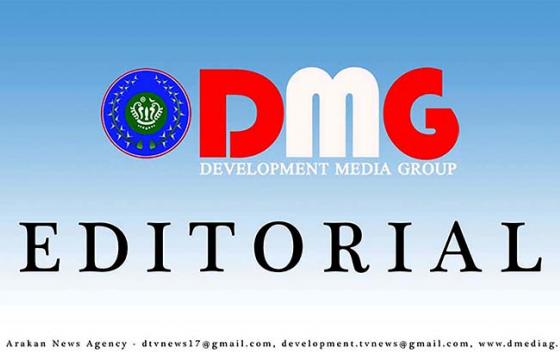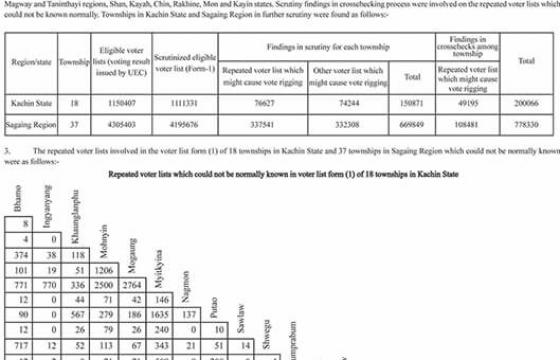The Union Peace Conference – 21st Century Panglong (UPC-21CP), held from 31 August to 3 September, was supposed to be Aung San Suu Kyi’s deliberation of her major policy realization to end the decades-long ethnic conflict, based on all-inclusiveness and level playing field that would be able to lift Burma out of it woes and to recalibrate back to normalcy and eventual development of the country. A condition and an atmosphere, without which would be impossible to make it happen.
Suu Kyi has repeatedly said just that and recently, during her China visit, she reiterated this again when taking to the press: “If you ask me what my most important aim is for my country, that is to achieve peace and unity among the different peoples of our union. Without peace there can be no sustained development.”
As the gathering was attended by 17 out of 21 Ethnic Armed Organizations (EAOs), it failed to be an all-inclusive meeting, but nevertheless which by far has been the most comprehensive get-together, involving major armed groups like United Wa State Army (UWSA), National Democratic Alliance Army (NDAA), Kachin independence Organization/Army (KIO/KIA) and Shan State Progress party/Shan State Army (SSPP/SSA), that have yet to sign the Nationwide Ceasefire Agreement (NCA).
Whatever it is, it essential and important to have a closer look, which termed those attending as “participants” and not “representatives” of the convention, for no substantive political discussion and decision-making would be involved, aside from still unclear representation quota agreement and whether the mode of future convention be based on tripartite dialogue, as preferred by the EAOs and ethnic nationalities, or five party setup, as it has so far been accepted to work out a political settlement for the nation. All these should be determined in the forthcoming Framework for Political Dialogue (FPD) amendment discussions.
The Agenda
The five day meeting was opened on 31 August, Naypyitaw’s Myanmar International Convention Centre with the opening speeches of domestic major stakeholders, including the UN General Secretary Ban Ki-moon. The convention was attended by some 1400 people from the cluster of EAOs, political parties, government-parliamentary-military and special invitees.
Originally, on 1 and 2 September, 66 of the participants from various groups of government, parliament, military, EAOs and political parties were to make their statements for 10 minutes each, with the remaining 10 persons doing their part on 3 September. But the plan was said to have a slight discrepancy, with a few failing to deliver position papers.
At the end of the conference, opening speeches of the convention, conference participants position papers (individuals/groups), and reports of Union Political Dialogue Joint Committee (UPDJC), Joint Ceasefire Monitoring Committee (JMC), Framework for Political Dialogue (FPD), National-level Political Dialogue, Preparatory Convention Committee were to be compiled.
The conference further resolved to hold UPC-21CP every six months and convene National-level Political Dialogue, shortly after the end of UPC-21CP.
Opening Speeches
Major stakeholders delivering opening speeches included State Counsellor Daw Aung San Suu Kyi, parliamentary house speakers Win Myint and Mann Win Khaing Than, and Burma Army commander‐in‐chief Snr‐Gen Min Aung Hlaing. Key ethnic leaders included Karen National Union chairman Saw Mutu Say Poe and Kachin Independence Organization (KIO) vice chairman Gen N’Ban La. Besides, National League for Democracy patron U Tin Oo and UN secretary Ban Ki‐moon addressed attendees with opening speeches highlighting the importance of Burma’s peace process.
State Counsellor Aung San Suu Kyi
In her opening speech, Aung San Suu Kyi touched on the need for achieving peace, using Panglong spirit to build the much desired federal union, her deliberation to interact with signatory and non-signatory EAOs, creating conditions to pull in the non-signatory EAOs to join the UPC-21CP gathering, employing and creating a joint-committee through tripartite mode to determine the peace process, the tragedy of refugees and IDPs, the importance of the youth gathering regarding the peace process in Panglong recently, and her thank and acknowledgement to the former President Thein Sein and his regime for having started the peace process.
But her main message has been her regime’s adherence of the NCA, formally endorsed by the parliament during the previous government tenure and her willingness that the non-signatory EAOs to sign the agreement.
She said: “National reconciliation also includes reconciliation between EAOs. If there is difference of opinion between signatory and non-signatory groups, our peace journey would be delayed. In order not to have misunderstanding and difference of opinion, we are trying to have all groups under the shadow NCA’s umbrella, which emphasizes the common agreement.”
Furthermore, she emphasized: “ With worries and hopes, our citizens are watching us. Those from unpeaceful areas are hopefully waiting (for the positive outcome). War refugees running here and there, made up of various age groups, have their hope dimmed for quite a long time. This time, they are watching with fearful eyes on how things will turn out. We can’t afford to forget their suffering.”
She stressed: “Today, we have started our (first) step of peaceful process through the 21st Century Panglong Conference, to resolve political problems through political means. How far (we) will go and whether peace could be achieved will be watched not only by the people of Burma, but also by the whole world. It depends on all the leaders in this convention hall, if the aspiration for peace could be imagined (delivered).”
She added the deliberation would not be mainly for the benefit of the people in the convention hall, but for the next generation to grow up physically and mentally secure, within the peaceful atmosphere.
Commander-in-Chief Min Aung Hlaing
In his opening speech, the Commander-in-Chief’s main thrust is that the EAOs should first lay down their arms and try to achieve their aspirations through legal channel. He said: “The needs (of the EAOs) should be demanded through political approach, in a way, through governmental, parliamentary, democratic means. Besides, basic democratic principles such as freedom of speech, writing and expression are already been implemented. Given this systematic, democratic way of doing things, it should be seriously noted that clinging to the armed struggle, (narrow) nationalism and regionalism, to demand for their aspirations, are against democratic principles.”
“We should have a dialogue for peace without being too ethnocentric,” he added further to make his point.
He further underlined the Tatmadaw’s (military) nation-building contribution and stressed, pressing all participants to abide by the controversial six “principles for peace”, which have been discarded by the ethnic armed group leaders, including ethnic political parties, and criticised by analysts as more of a stumbling block to cooperation than a road-map to peace. Adherence to the military-drawn, 2008 constitution that is part of the six principles openly endorsed the key roles for the Tatmadaw in politics.
KIO Major General N’ Ban La
Major General N’ Ban La, leader of the Kachin Independence Organisation (KIO) and Chairman of the United Nationalities Federal Council (UNFC), who until the eleventh-hour was still unsure of whether he would be able to deliver his opening speech, which the government side in the end has to give in, said that the peace talks must follow in line with the legacy of the historic 1947 Panglong Agreement.
He explicitly emphasized that political solution and settlement have to be based on Panglong Agreement, Promises and Spirit, to the chagrin and annoyance of the military, with perhaps some Bamar political class, but overwhelmingly approved by most of the ethnic nationalities, armed and unarmed.
“The reason why we, the non-Bamar ethnic people, are staging armed revolution is because of the loss of the Panglong Agreement’s guarantees for democracy, national equality and self-determination of ethnic people,” said Maj Gen N’ Ban La.
He also made it clear that his organisation presence at the conference is meant to show the support for the NLD civilian government following the former opposition party’s election victory last year. “This is the very first step of the [new administration’s] long-term peace negotiations that will solve decades-long conflicts,” he said.
He also once again stressed the federal Union that the armed ethnic organisations are demanding is not secession from the Union, but is a call for equality for the ethnic nationalities.
Position paper presentation
Altogether some over 70 position papers were presented. But the bulk of it centre around federal union formation from different points of view.
The Tatmadaw and Union Solidarity and Development Party (USDP) MPs papers were fixed on nailing the assumption that the military-drawn, 2008 constitution has federal features and that with some amendment, a federal Union could be built. Other than that the military bloc and USDP were determined to reject the 8 states configuration mode – where the Bamar has to become an equal state like all the others – and instead preferred the present setting of 14 states and regions, emphasizing that territorial-based federalism as the way to go.
The ethnic political parties and armed organizations although were for the distribution and coordination of power between the two tier states and federal government system, they still differed on how this could be achieved, implicating the scene even more with demands for new state-level administrations or upgrading their statuses, notably by Wa, Palaung and Pa-O ethnic groups.
The NLD position paper delivered by Dr. Tin Myo Win, Suu Kyi’s top peace negotiator, was said to be somewhere between the ethnic and military bloc proposals, emphasizing for harmonious states-federal government relationship, with a built-in checks and balances between the executive, parliament and judiciary.
The UNFC, as a group of four presenters also tabled a proposal for the reform and innovation of the present Tatmadaw to be more federal and in line with a federal union, putting it under the civilian government control, with equal participation and privilege in serving the union army, coupled with control of security forces in each respective, individual ethnic state. A ceiling of 0.05 percent armed forces strength not exceeding the country’s population was also proposed.
On the fourth, final day of convention, wrapping up the whole position paper presentation spectrum, Suu Kyi said: “When I looked at the presentation of groups over the past four days, I know who is concentrated on things past, and who is focused on how to build our future state. But there is time yet for those stuck on the past to look forward to the future. It is very crucial that commit to bravely moving forward, not for the sake of an individual or an ethnic group, but for the sake of the entire Union.”
Speaking of criticisms of the conference organisation, she added, “But we don’t need to fear having problems or set-backs – the threat is of pretending we do not have any problems. The most important thing is the ability to bravely move ahead, and work together on finding solutions,” she said, according to Myanmar Times.
Outlook and perspective
The UPC-21CP that has been hastily convened to meet the deadline time-frame of Suu Kyi did stir up a lot of scepticism and doubtfulness. Also on the all-inclusiveness score, it has not been able to fulfil the government’s often promoted and determined commitment. Other than that, the details in handling protocols like, sitting plan, disagreement over UNFC’s Chairman opening speech inclusion, failure to honour the rebel armies military ranks, and last but not least, the ongoing wars in Kachin and Shan States, which were intentionally heightened on the eve of the convention, were drawbacks that have to be taken into account.
The excluded three EAOs inclusion to the convention was put on hold to the last minute, as the government negotiators wouldn’t let them in, unless they committed themselves to promise, to give up their stance of armed struggle, which was also duly rejected.
BBC Morning Section on 31 August reported that Htun Myat Naing, leader of the Arakan Army (AA), said that just saying pleasant words for the ears, without really meaning it is like, in reality, closing the door to peace process; for the government side is demanding conditions – like surrender – that they could not follow.
Earlier the unelected, officially registered some 70 political parties that was offered only a handful of five representative quota to attend the convention by the government also rejected the offer and declined to participate.
In addition, Hkun Htun Oo, a prominent ethnic politician, who is Chairman of the Shan Nationalities League for Democracy (SNLD) and United Nationalities Alliance (UNA), also boycotted the convention for it was not all-inclusive.
The United Wa State Party/Army (UWSP/UWSA) on the second day pull out of the convention and returned home, due to the degrading treatment of the party from letting them wear the observer tags and treating its delegation as such.
The government has been quite enthusiastic with the Wa and people are at a loss on why this kind of glitches have to happen. However, the government later formally sent apology, stating that this as a technical failure on its side and in no way an attempt to degrade or belittle the delegation.
The Wa duly replied stating its backing of the convention and praised Suu Kyi’s life-long peace commitment, but pull out as there were no equality and transparency in convening the gathering.
Also regarding the allotment for opening speech where the signatory and non-signatory EAOs’ (UNFC) request to speak at the opening ceremony, the government side rejected it until the eleventh-hour, before giving in to the demand, as its Chairman N’Ban La threatened not to attend the opening ceremony but would tour the Naypyitaw city with his wife instead, if he was not allowed to speak.
Sao Hsur Hten, patron of the Shan State Progress Party/Shan State Army (SSPP/SSA), was heard complaining later that if the UNFC has to meet such difficulties even to deliver a speech, he didn’t like to think about the political negotiations.
And finally, it seems that it is almost becoming a tradition to roll out offensives, whenever meaningful peace process takes place. Reports keep pouring in, on the eve of the convention, about numerous firefights and armed clashes in Kachin and Shan States between the Burma Army and Kachin, Shan and Ta’ang troops, mostly due to the former’s military offensives. The Tatmadaw’s massive military reinforcement in Kachin state was said to be also ongoing, even during the convention, according to Kachin sources.
Prior to it, on the eve of the convention, the military MPs rejected the wordings of “democratic federal union”, when the union parliament doled out an endorsement of the UPC-21CP, as it was said to be against the 2008 military-drawn constitution. The charter doesn’t use or mention the word “federal”, but only “Union practising genuine, disciplined multi-party democratic system”. However the parliament endorsement was approved with the majority vote of 391 to 184.
But the positive side of the launching of this convention is the initiative of taking the first symbolic step, which is positive and hailed by international community and organizations like United Nations, European Union, United States, China, The Elders, an independent association of human rights advocates and so on. And even though the participation count of the EAOs were not all-inclusive, it did cover the whole 17 EAOs from a total of 21, a lot more than just 8 than during the tenure of Thein Sein regime. It could be said the partial participation has now become more inclusive, for big groups like UWSP, KIO and SSPP were involved and must be taken as a big plus. Maybe in the next round of talks, the three excluded EAOs could participate to become really all-inclusive.
Another good thing about the convention is the position paper presentation of all organizations that were invited. With this undertaking, the premises of negotiation and debate have been thrown wide open, which some likened to the opening of a Pandora’s box . But open questions like how long it is going to take and what the outcome would be will remain unanswered for the time being.
Most important though would be in order to get all stakeholders on board, the soft power domination of the NLD, hard power possessed military rivalry must come to an end and level playing field must be created and worked out, if the peace process is to continue smoothly.
Finally, as Salai Lian Hmung Sakhoung of Chin National Front (CNF) has recently and correctly said that there are two common points among all the stakeholders, regardless of many different views and ideas. They are the desire for peace and to build the country based on the principles of democracy and federal Union. We could only heartily agree on his assumption. But needless to say, whether these much valued aspirations by all the people will be achievable in the near future or not will solely rest on all the stakeholders’ ability and determination to deliver and on nobody else.






